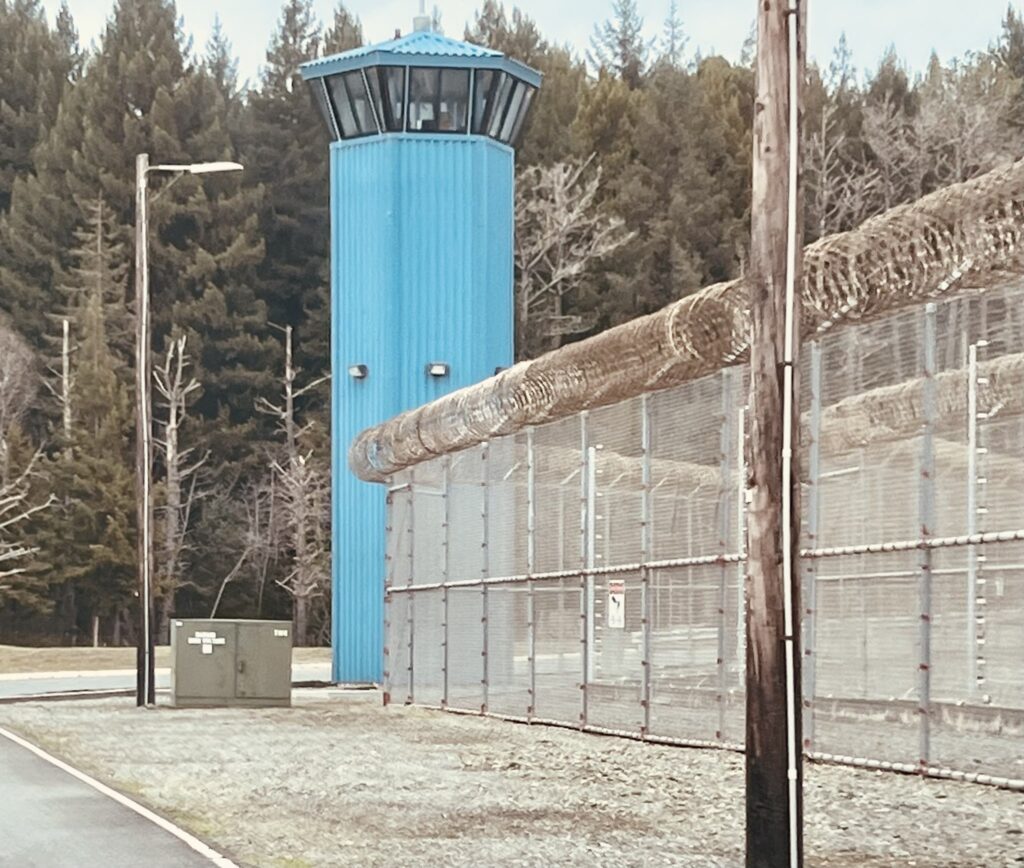Just Trying to Learn Something

In my first class at Pelican Bay State Prison, both the students and I learned so much.
Oddly enough, I was more anxious about teaching the material – Political Science 10: American Government and Politics – than engaging with incarcerated students on a maximum-security yard. While I’d lived the subject for the last 20 years, I found myself worried about my ability to share my professional journey in a way that held the attention of a complicated class.
In the evening. For three hours. With only a vintage textbook, a simple outline, and my voice.
So, I prepared. Maybe even over-prepared. I read and reread. I drafted an outline for students and one for myself. I played and replayed the first 10 minutes with the class. I even prepared to dress the part.
For better or worse, a prison is designed to control everyone and everything inside its walls. Like most correctional facilities, control includes the dress code at Pelican Bay. It starts at the main entry gate with a prominent red and white that reads, “No Blue Jeans” right next to “No Weapons.” But it doesn’t stop there.
Visitors cannot wear blue or gray. They might be mistaken for an inmate. Visitors cannot wear green or brown. They might be mistaken for a correctional officer.
So, no blue, gray, green or brown – or basically my entire wardrobe. Red, yellow, orange, and purple are available. But, if you know me, you know that’s a stretch. So, I decided to go a more classic ensemble – my best Johnny Cash impression dressed in all black head to toe. Hard to go wrong in black.
When I arrived, I signed in and opened my bag for inspection. I made my way through one gate and heavy door after another. At the entrance to A Yard, I checked out a set of keys and an alarm – an alarm that looks like one of those old fashioned “I’ve-fallen-and-can’t-get-up-Life-Alert” alarms. But here, instead of being worn around the neck – a practice frowned upon – the alarm is held in a 1980s dark leather case easily attached to a belt.
A simple push of the button will send a rush of correctional staff to the holder’s location. The alarm – along with a small plastic whistle – are the two measures of “protection” educational personnel are required to carry. Since the program’s inception, the alarm has never been used for an actual emergency. Although I’m certain it’s been deployed a time or two because of the clumsy fingers of absent-minded faculty.
I finally arrive to a classroom that looked like most any other classroom – well, more like a one-room school house with waist-to ceiling windows ran the length of the hallway. Below the window sat a book shelf filled with old textbooks on Math, English, Science, and History. All of them were well-worn and had seen much better days. A well-used white board and a large TV was flanked by large maps of the United States and the World on the front wall. A large periodic table covered the back wall and various English-related posters were scattered around the room.
I then took care of the required administrative items. Checked in with the Correctional Officer on duty. Secured a sign-in sheet that amounts to a time reduction in a student’s sentence. Inventoried key items in the classroom like the six padlocks – a potential prized possession in a prison for their versatility.
And then waited for students to arrive. I wasn’t overly nervous. Just anxious to get started.
When each student arrived, I greeted them with an extended hand and eye-to-eye greeting, “Hi. How are you? I’m Rusty Hicks. Welcome.” Some looked surprised – acknowledging the gesture but quickly moving away. A couple of students even managed to avoid me at the door. Others returned the favor with the ease of meeting a new person at a cocktail party.
A few weeks before, I was told by another instructor that the correctional staff frowned upon handshakes between inmates and visitors. I don’t know if that’s actually true or not. It’s only what I was told. And I can probably guess why that might be a preference, if not a policy. But for me, it was a simple gesture of respect and humanity, invitation and welcome. I only hoped that’s how it landed. And I was willing to beg for forgiveness if it became an issue. It seemed worth the risk.
We finally got started. I introduced myself and my political background. Then I shared my disclaimers – specifically that I was not an academic, but a practitioner of political science. I even admitted to be a Cowboys fan. In a room of Forty-Niner fans. With an important playoff game that weekend, next Tuesday’s class was going to be rough for someone. Hopefully not for me! But, alas, it was. There’s always next season, right?
I asked them to introduce themselves and share what they hoped to learn in the class. For some, this was their last class before graduation. For others, this was their very first. While they all shared it in different ways, many hoped to learn what “politics” was all about, how it impacted them and those they cared about, and how they could use it to change their own lot in life. One guy summed it up when he said with a sigh of resignation, “I’m just trying to learn something.” A simple objective, but maybe the most important one in the room.
Finally, I asked them one last question, “What do you need from me as an instructor to be successful in this class?” Three answers and comments struck me. One said, “Structure. Make sure there’s clear structure as to what is expect of us. That’s what we need.”
“Honestly, just show up and give us the real deal. Tell us what’s really going on. Don’t sugar coat it.” Fair enough.
For three hours, students were attentive and engaged. Of course, there was the occasional droopy eyes in the room. But, I can’t blame them. If I wasn’t talking, I’d probably be right there with them. The room quite warm. And I’m certain all the hot air I was spewing wasn’t helping.
But the conversation in the classroom kept us awake. And kept us laughing.
In one moment of hilarity, I broke the class up into small groups and asked them to consider the question, “What is the purpose of government?” After about 10 minutes of lively discussion, I brought the class back to learn what they’d come up with. The first answer, “To control the money! ‘Cause if you got the money, you got the power!”
Well, not exactly the answer I was looking for. But I guess it made some sense. I smiled as I reluctantly wrote the answer on the board, thanked the student for his contribution and asked the class to dig a bit deeper.
The next student quietly replied, “To maintain order?” It was the number one answer in the book. The book I’d just handed out at the start of the class. I let it go, wrote his answer on the board and we discuss a bit as to what “to maintain order” actually meant before I called for another reason.
The student next to him pipes up, “To protect property!” It was the number two answer in the book. I smile broadly and ask the class, “Are you all just pulling this from the book?” They immediately burst out laughing. One of them says, “What do you expect? We’re resourceful!” Resourceful indeed.
After the class was done for the evening, the students departed and I left shortly after them. AS I walked out the door, I found myself looking forward to next week’s adventure as I prepare – and probably overprepare – to discuss the founding of our Nation and the path to the U.S. Constitution. What a ride of learning something this will be.
Click here to sign-up to read more stories like this one!
